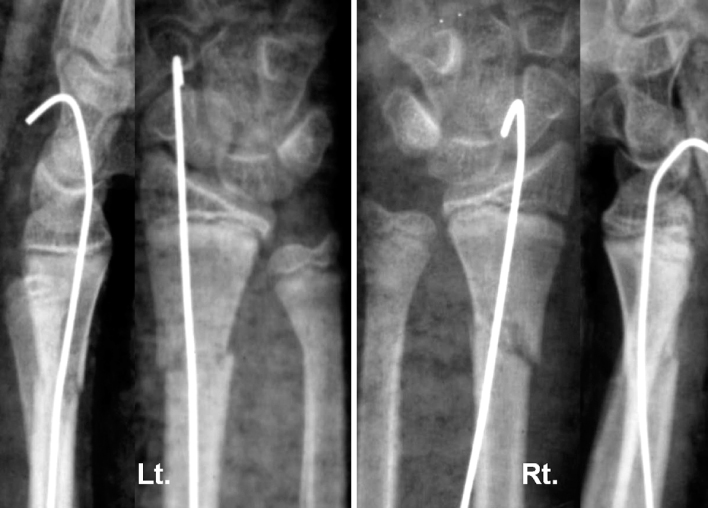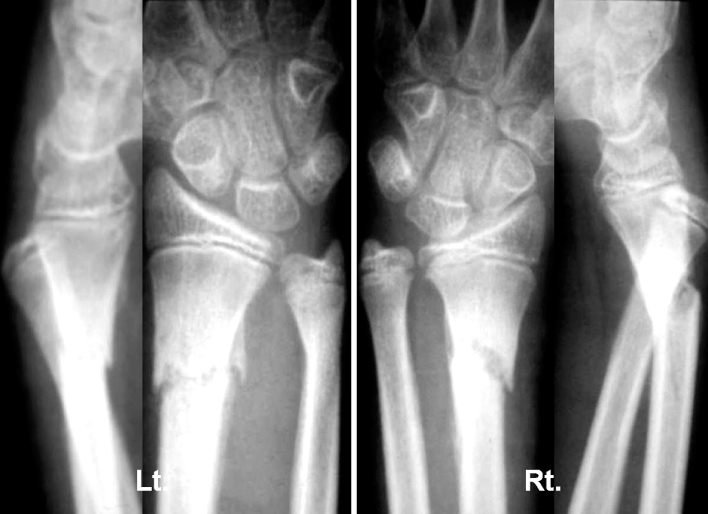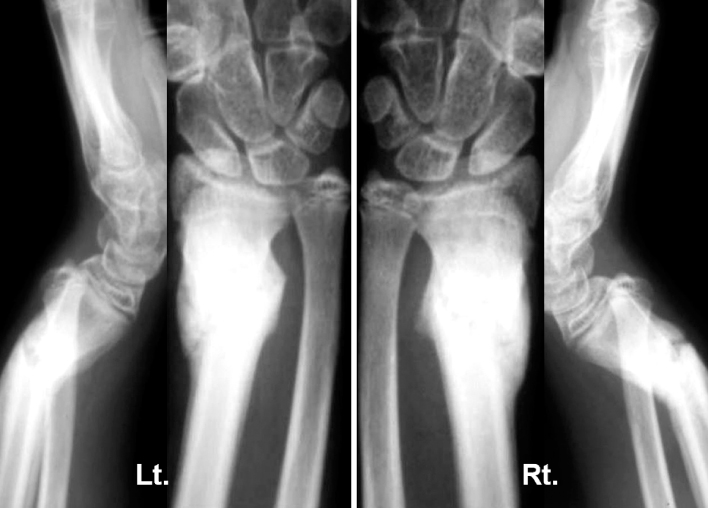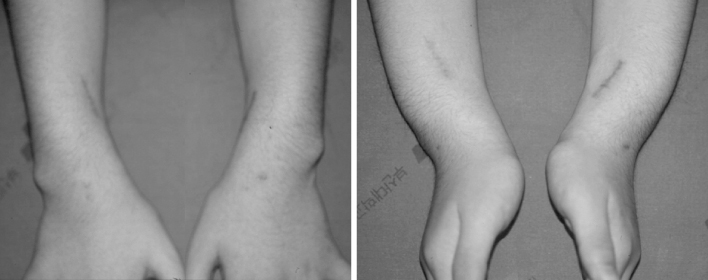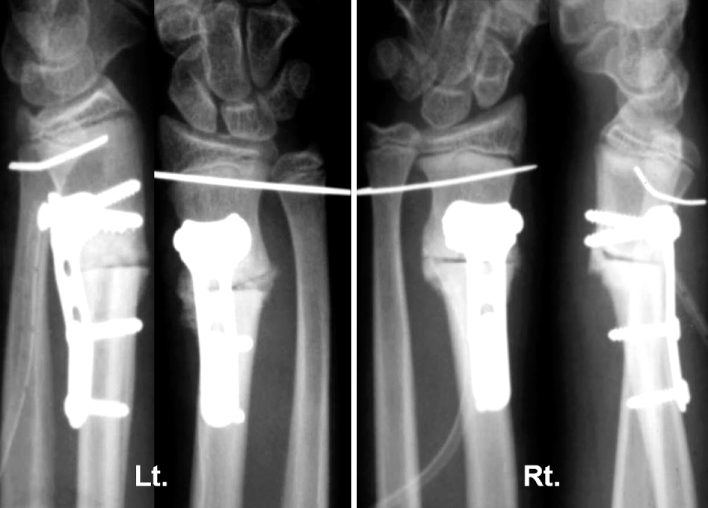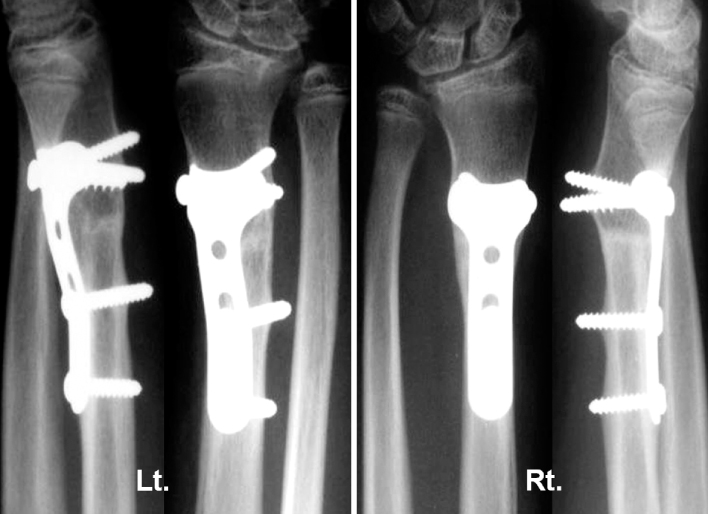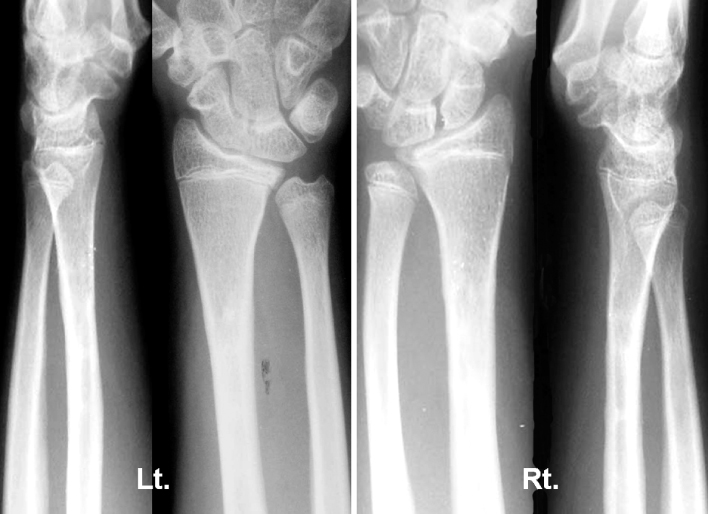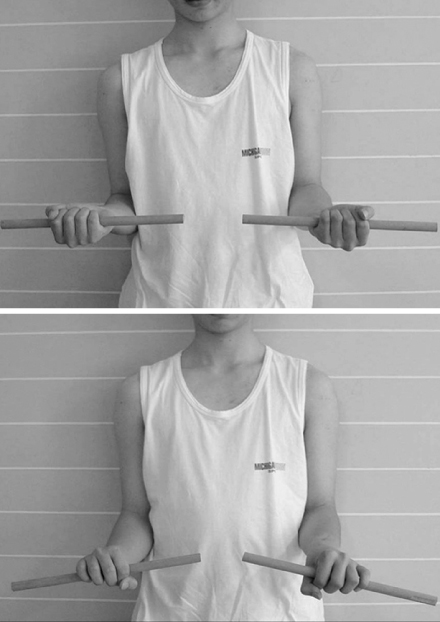J Korean Fract Soc.
2009 Oct;22(4):292-296. 10.12671/jkfs.2009.22.4.292.
Bilateral Malunion and Distal Radioulnar Joint Dislocation after Operative Treatment of Bilateral Galeazzi Fractures in Child: A Case Report
- Affiliations
-
- 1Department of Orthopedic Surgery, College of Medicine, Pusan National University, Busan, Korea. scheon@pusan.ac.kr
- KMID: 1469998
- DOI: http://doi.org/10.12671/jkfs.2009.22.4.292
Abstract
- Galeazzi fractures in child is rare and seldom necessary of operative treatment because the result of conservative treatment is good. We present the patient who was a 11-year-old male and fell onto his both hands during a hundred-meter dash. His diagnosis was bilateral Galeazzi fractures and limited open reduction and internal fixation with Kirschner pins was initial treatment at local hospital. After 4 weeks postoperatively, Kirschner pins were removed and rehabilitating exercise was started. After 4 months postoperatively, he was transferred to our hospital due to malunion with severe angular deformities and distal radioulnar joint (DRUJ) dislocation. He was treated with corrective osteotomy. Thus, as in this case, we suggest more careful treatment and observation if conservative method of Galeazzi fracture in child is chosen and consider operative method as treatment according to age and pattern of fracture.
Figure
Reference
-
1. Campbell RM Jr. Operative treatment of fractures and dislocations of the hand and wrist region in children. Orthop Clin North Am. 1990; 21:217–243.
Article2. Green NE, Swiontkowski MF. Galeazzi fractures. In : Browner BD, Jupiter JB, Levine AM, Trafton PG, editors. Skeletal Trauma in Children. 3rd ed. Philadelphia: WB Saunders Ins;2003. p. 229–234.3. Herring JA. Fractures of the forearm. In : Hering HA, editor. Tachdjian's Pediatric Orthopaedics. 3rd ed. Philadelphia: WB Saunders Ins;2002. p. 2218–2246.4. Mikić ZD. Galeazzi fracture-dislocations. J Bone Joint Surg Am. 1975; 57:1071–1080.
Article5. Mino DE, Palmer AK, Levinsohn EM. The role of radiography and computerised tomography in the diagnosis of subluxation and dislocation of the distal radioulnar joint. J Hand Surg Am. 1983; 8:23–31.
Article6. Reckling FW. Unstable fracture-dislocations of the forearm (Monteggia and Galeazzi Lesions). J Bone Joint Surg Am. 1982; 64:857–863.
Article7. Walsh HP, McLaren CA, Owen R. Galeazzi fractures in children. J Bone Joint Surg Br. 1987; 69:730–733.
Article
- Full Text Links
- Actions
-
Cited
- CITED
-
- Close
- Share
- Similar articles
-
- The role of arthroscopic triangular fibrocartilage complex repair in a case of bilateral Galeazzi fracture-dislocation
- Transscaphoidal Dorsal Perilunar Dislocation Associated with Dislocation of Distal Radioulnar Joint: A Case Report
- Volar Dislocation of the Distal Radioulnar Joint Blocked by Displaced Dorsal Barton Fracture
- Anterior Dislocation of Distal Radio-Ulnar Joint: A Case Report
- Surgical Treatment of Galezzi's Fracture in Adult


